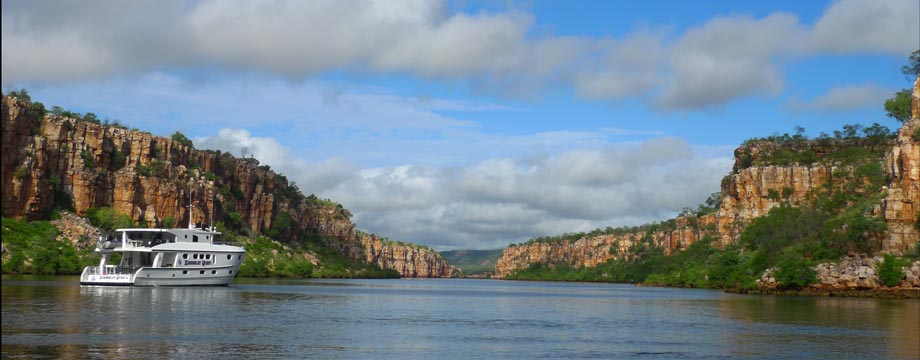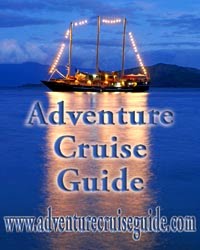When it comes to natural wonders, Australia has more than its fair share. For a start there’s the Great Barrier Reef, Australia’s Red Centre with Uluru – or Ayers Rock – as its centrepiece.
Looking for a great bundle of brochures on Australia Adventure holidays? Well, we have the Top 4 travel brochures on Australia Adventure holidays for you – absolutely free! Click to order them now.
Elsewhere there is dramatic coastal wilderness and islands teaming with wildlife. Inland there are the snow-capped Australian Alps and Outback areas of raw natural beauty, like the craggy Flinders Ranges in South Australia and The Kimberley in Western Australia.
Australia is blessed with huge areas of ancient rainforest and world famous wetlands like Kakadu National Park. There is even a World Heritage-listed area on Sydney’s doorstep, in the shape of the Greater Blue Mountains, a vast stretch of ferns, canyons, waterfalls and forest, as well as cosy villages.
While there are major areas of natural significance all over Australia there are smaller pockets scattered everywhere too.
One memorable place you might come across as you drive north from Sydney along the coast is Hundred Acre Swamp. People tend to make a lot of claims that don’t stand up but when Dennis Ryan tells you he has the “best backyard in Australia” you can easily believe him. His 110-acre property backs onto one of the most important wetlands in Australia.
This once remote area of tidal marshland and estuary connects up to the Nambucca River, just west of Macksville, on the scenic New South Wales mid-north coast.
“My grandfather spent most of his life trying to drain it, to make this area more European,” Dennis says, as the canoe paddle dips into the shallow, tannin-stained water. “He used a shovel and an axe to make floodgates and miles of drains, but luckily for me and the wildlife he failed.”
Looking for a great bundle of brochures on Australian holidays? Well, we have the Top 3 travel brochures on Australian holidays for you – absolutely free! Click to order them now.
Today, the 180-acre waterway is home to some 117 species of bird, including jabirus, egrets, flycatchers and azure kingfishers. More than 400 black swans nest here, ospreys keep watch from a giant ironbark tree and the water teems with prawns and native fish.
“An Aboriginal friend of mine talked me into doing canoe tours,” Dennis says. “He reckoned I had to show people if I wanted to save the place.”
Dennis and his wife Marilyn bought the former cattle farm from his uncle in 1989, and renamed it Valley of the Mist. “Some afternoons, when it finishes raining, a cloud forms over the wetlands beneath the trees,” Dennis continues.
The Ryans abandoned the cows and crop chemicals and started growing native Australian fruits using sustainable methods. He now runs bush tucker tasting tours, as well as canoe trips.
“There are just seven canoe trips a week,” he says. “I don’t want it to turn into simply tourism. I want it to remain special. We use the wildlife and the wetlands as much as they use us.”
A typical journey sees you paddling past tiny islands of reeds and stunted saplings. Some islands are so small that they can only support a single bush. The wetland is so shallow that the canoe’s hull cuts through the pondweed.
Birds call from all directions and dozens of ducks take off in a noisy flurry of beating wings. At one point you might see eighty black swans glide by and later hundreds of flycatchers darting across the surface, picking insects out of the air.
Back on dry land Dennis shows visitors around the wetland’s swampy edge, pointing out various trees and shrubs and stopping occasionally to crush a leaf or inspect a seed head.
“My mum spoke the local Aboriginal dialect,” says Denis. “She learnt it as a kid. Years ago, in autumn, the Aboriginal women would come when the paperbark trees were in flower. It was the time of the mullet run. My grandmother traded with them for bush medicine. We’ve been using it ever since.”
He still boils up tea tree leaves for coughs and colds, and uses native leaves on abrasions and ulcers.
A cork wood tree grabs his attention. “The Aborigines used to grind up the bark and put it in the water,” he says. “It made the fish unconscious. It was used in eye surgery as well, to collapse the muscles in the face. I made pocket money collecting it as a kid. The leaves were sent to France for the chemist to extract the chemicals, until it was synthesised in the 60’s.”
He moves on to a clump of sedge. The local Aboriginal women used to collect the tiny brown seeds and grind them up to make bread. Then there is the lilly pilly tree. Aborigines would crush the leaves and boil them along with the seeds and bark “to prevent diabetes” Dennis says.
Of the many pockets of natural significance along the south coast of New South Wales is Montague Island, near the pleasant town of Narooma.
Thousands of Humpback and Southern Right whales pass Montague Island each year on their migration route between Antarctica and the warmer northern Australian waters. Sometimes you can spot killer whales, minke whales, fin whales, sei whales and pilot whales around here too. Whale-watching boat trips are popular around here, as they are up and down both the New South Wales and Western Australian coastlines. You can even stay in the island’s lighthouse.
More than 1,000 Australian fur seals live around its rocky shore along with a small colony of New Zealand fur seals. Thousands of pairs of little penguins make their home in burrows on the island. Other species of sea birds and song birds nest here too.
Meanwhile, on the other side of the continent – in Western Australia – a trip from Perth in spring means you have the chance to see one of the most amazing wild flower spectacles on the planet.
Western Australia’s wildflowers are legendary. In some years, after a good season of rain, vast swathes of everlasting daisies colour the arid lands. But for more predictable wildflower displays, you don’t have to travel far out of the city.
On the first day of your coastal journey north from Perth you can dip into three national parks. Off the main road the country is clouded with feathery-white smoke bush. Emus dart past with flurries of chicks, cockatoos squawk overhead, kangaroos graze sleepily, and giant wedge-tailed eagles sit on passing fence posts.
The sand plains are choked with wildflowers, an intricate palate of reds, blues, yellows and whites. Western Australia’s wildflowers are usually at their best from late July to early November and include miniscule everlasting daisies, carnivorous sundews that feed on ants and trigger plants – tiny things that flick a package of pollen onto the back of a fleeing insect.
Whether it’s the big things or the small things, this remarkable continent will amaze you at every turn.
Written by Marc Llewellyn on behalf of Tourism Australia.

